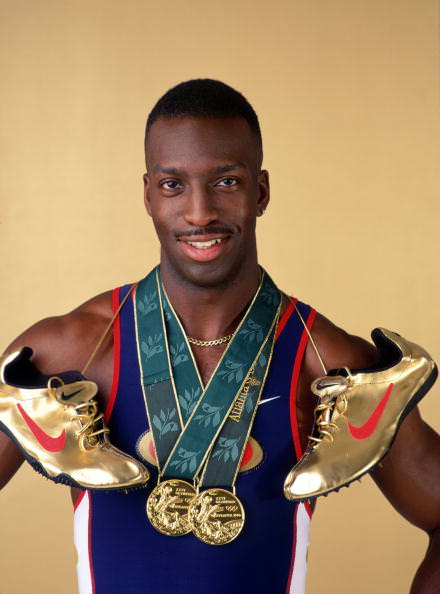The 1996 Atlanta Olympics was a grand spectacle of athletic talent, global unity, and intense competition. While Reebok shelled out a hefty $50 million as the event’s official sponsor, it was Nike that managed to steal the spotlight. Surprisingly, Nike wasn’t even an official sponsor. So, how did they pull off this marketing coup?
The answer lies in their mastery of ambush marketing—a smart and cost-effective strategy that turned the tables on Reebok.
Let’s break down what Nike did and why their tactics have become legendary in the world of marketing.
What Is Ambush Marketing?
Ambush marketing is when a brand leverages the hype of a major event without officially partnering or sponsoring it. By carefully crafting campaigns that ride the wave of public attention, brands can enjoy massive visibility without the sponsorship price tag.
This approach isn’t just about saving money; it’s about being creative and agile. Ambush marketing thrives on subtlety—steering clear of official logos or slogans while still aligning the brand with the event’s energy. One marketer famously said, “It’s like crashing a party and becoming the life of it without stepping on anyone’s toes.”
The Great Nike Heist
In 1996, Reebok was confident they had scored a marketing jackpot by securing the title of the official sponsor of the Atlanta Olympics. Yet, Nike managed to dominate the conversation without spending a dime on sponsorship.

Instead of following the traditional sponsorship route, Nike took an unconventional path. They opened a brand-new store right near the Olympic Village, ensuring a steady flow of athletes, fans, and media. They plastered Atlanta with billboards and distributed flyers, cleverly staying away from any copyrighted Olympic imagery or logos. But the real game-changer? The golden shoes worn by sprinter Michael Johnson.
Read More: Is Reliance Trying To Pull Off A Jio In The Soft Drink Market?
Michael Johnson’s Golden Spikes
When Michael Johnson, one of the fastest men alive, took to the track in shimmering golden spikes designed by Nike, the world couldn’t look away. The shoes were not just functional—they were a bold fashion statement. Johnson’s stellar performance earned him two gold medals, but the golden
These spikes quickly became an icon, earning Nike global recognition. The highlight came when TIME magazine featured Johnson on its cover, with his medals and golden shoes prominently displayed. Nike’s gamble had paid off spectacularly, cementing their association with the Olympics even without official sponsorship.
Nike’s History Of Ambush Marketing Brilliance
The Atlanta Olympics was far from Nike’s first foray into ambush marketing. In 1984, during the Los Angeles Olympics, Nike’s “I love LA” campaign captured the city’s spirit, making them the unofficial face of the games. Similarly, during the 2012 London Olympics, Nike launched their “Find Your Greatness” campaign, which featured athletes from lesser-known London worldwide, from London, Ohio, to London, Nigeria.
This pattern of hijacking major events has become Nike’s signature. By investing in creative campaigns rather than sponsorships, they consistently outshine their competitors. Their approach isn’t just cost-effective—it’s disruptive, bold, and deeply memorable.
Ambush marketing may be effective, but it’s not without controversy. Critics argue that it’s unfair to the companies that invest millions in official sponsorships, only to be overshadowed by non-sponsors. Yet, defenders of the strategy view it as a testament to creativity, a way to disrupt the monopoly of big-budget sponsors.
Nike’s campaigns showcase how ambush marketing relies on emotions and storytelling, not expensive partnerships. It’s a David versus Goliath battle—where wit and imagination often win over money.
Nike’s success in ambush marketing isn’t just about cutting costs; it’s about redefining the rules of the game. By focusing on the power of storytelling and visual impact, they have consistently proven that being bold can outweigh being official.
Reebok may have been the official sponsor of the 1996 Olympics, but it was Nike who truly owned the moment. From golden shoes to unforgettable campaigns, Nike’s “just do it” philosophy applies as much to their marketing strategies as it does to their athletic gear. This story reminds us that sometimes, thinking outside the box is all it takes to turn the tide in your favour.
Image Credits: Google Images
Sources: Finshots, The National, Media Marketing
Find the blogger: Katyayani Joshi
This post is tagged under: Nike Marketing, Ambush Marketing, 1996 Olympics, Michael Johnson Golden Shoes, Creative Advertising, Branding Strategies, Marketing Genius, Advertising Tactics, Brand Storytelling, Nike Success Story, Marketing Inspiration, Atlanta Olympics 1996, Unofficial Sponsorship, Marketing Case Studies, Olympic Marketing
Disclaimer: We do not hold any right, copyright over any of the images used, these have been taken from Google. In case of credits or removal, the owner may kindly mail us.
Other Recommendations:
Nike Employee Surveys Reveals Women Are Called “Bitch,” “Honey,” “Girls”




































